#Usson
Photo
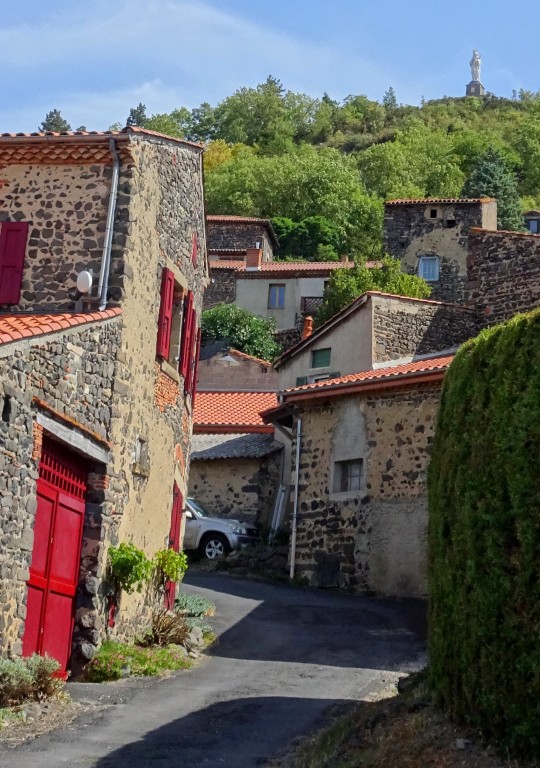


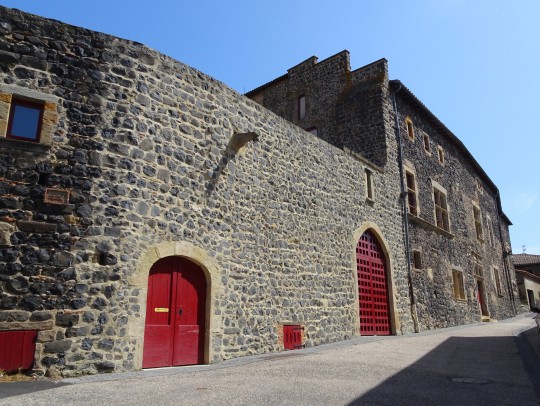

Je reviens ENCORE une fois à mon projet de présenter la plupart de mes 55800 photos (environ). On est en 2017 et comme ce blog est né en 2017, j’arriverai donc au bout de cette présentation.
Avec Christine, on avait décidé de partir de Pau vers Vichel en Auvergne par les petites routes. Nous voici enfin aux environs de Vichel.
Le charmant village médiéval d’Usson. Et un panorama sur la Limagne, sur les pics basaltiques de Nonette puis du Moncelet (sur les flancs duquel se trouve Vichel)
#souvenirs#auverne#usson#villae#médiéval#limagne#plaine de la limagne#nonette#basaltique#montcelet#moncelet#vichel#tracteur#vigne
9 notes
·
View notes
Photo










Être et avoir [To Be and To Have] (Nicolas Philibert, 2002)
#Être et avoir#Nicolas Philibert#France#Auvergne#enfants#film documentaire#amitié#simplicité#école primaire#classe#To Be and To Have#instituteur#enseignement#professeur#Saint-Étienne-sur-Usson#relations#élèves#pédagogie#vie#école maternelle#apprentissage#lecture#paysans#village#documentary film#vivre ensemble#monde rural#rural school#Massif central#Puy-de-Dôme
1 note
·
View note
Text



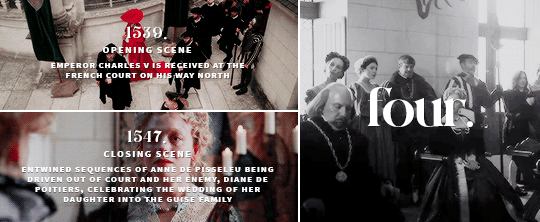
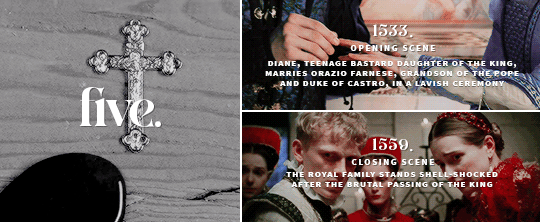


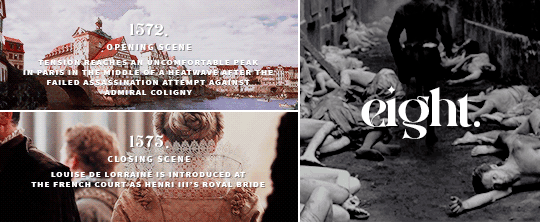



K I N G S I D E, a tale of seven kings
first season 1514-1520. Claude and François finally get married, a vacant seat for Mary Tudor, Louise of Savoy's stubborness to keep her son in check. A new King arises, the New Order, François' quest for glory in Italy. Another crown, another campaign.
second season 1522-1530. The inheritance dispute that leads Bourbon to treason. The pursuit of the italian dream, Claude dies, all is lost in Pavia. Süleyman and the unthinkable alliance, captivity in Spain. The Ottoman fleet. Royal depression. The inheritance dispute that led Bourbon to treason. The ladies' peace, Henry VIII flinching, a price for two princes, a New wife for the King.
third season 1531-1537. Louise dies, tensions between François and Marguerite. The wedding of Catherine and Henri. The rise of Pisseleu, the battle at Court between Charles and Henri and their people. War between Diane and Montmorency. Placards and the anti-heterics frenzy, another war in Italy. Wedding and death of Madeleine.
fourth season 1539-1547. Mending tensions between France and Spain. A very stubborn niece. All eyes on Henri and Catherine's sterile womb. Death of Charles. The duel in Jarnac. The King is dead, long live. Diane de Poitier's absolute triumph over Anne de Pisseleu. The Guises make their move.
fifth season 1553-1559. Diane of France's not so typical royal wedding. Catherine giving birth to the twins, Chenonceau goes to Diane, the cordial hate between the two. Rohan VS Nemours. Montmorency mess and a remarriage for Diane of France. The death of Henri, everything falls down.
sixth season 1560-1564. François II barely hanging on, Catherine's almost giving up, Elisabeth married off, the Guise family's counterpower, Montemorency's political exile, the Amboise conspiracy, preparations for the grand tour.
seventh season 1565-1572. The end of the grand tour, encounter between the royal family and Elisabeth, queen of Spain. The rise of Charles IX, a new queen, Marie Touchet and her bastard boys. Catherine's plans to get a match for Marguerite. Rising tensions between Charles and Henri after Jarnac and Montcontour. Marguerite's nuptials amidst tensions and Coligny's attempted murder.
eighth season 1572-1575. Coligny and the Protestant leaders rallying the troops. The Saint Barthelemew Massacre and the promise of Marguerite to never forgive her family. Catherine finds out Anjou's possible involvement. A new king for Poland. Marguerite's toubled married life. Death of Charles IX. Henri's escape from Poland and slow return to France.
nineth season 1581-1584. Catherine's illusions shatter. New King, no heir. Marguerite returns to Paris. Louise shows some spine against the King's favorites. Quarelling with Anjou, tensions with Elizabethan England, Anjou's election and subsequent death and Catherine's anger. The Guise family veering off the road.
tenth season 1585-1589. The mounting war of the three Henris. All eyes on King Henri who has no sons, Catherine's political exile, the slow burning of the last Valois children. Hunting down Marguerite from stronghold to stronghold, ending with her house arrest in Usson. Assassination of the Guise brothers, the death of Catherine, Henri III breaks down in Diane's arms. Marguerite in exile, Diane the only "true" daughter of Catherine's, as she sets out to (successfully) pacify the kingdom on her own.
#historyedit#perioddramaedit#mine#*#*kingside#16th century#so yeah this took me a whole month instead of a good week#we love crappy laptops
192 notes
·
View notes
Text



Another wonderful little restaurant at Font Usson du Poitou, a hamlet of about 25 people. But then it’s close to Usson with its 1,200 residents. Amazing how these great little restaurants can make it in such tiny places?
2 notes
·
View notes
Photo
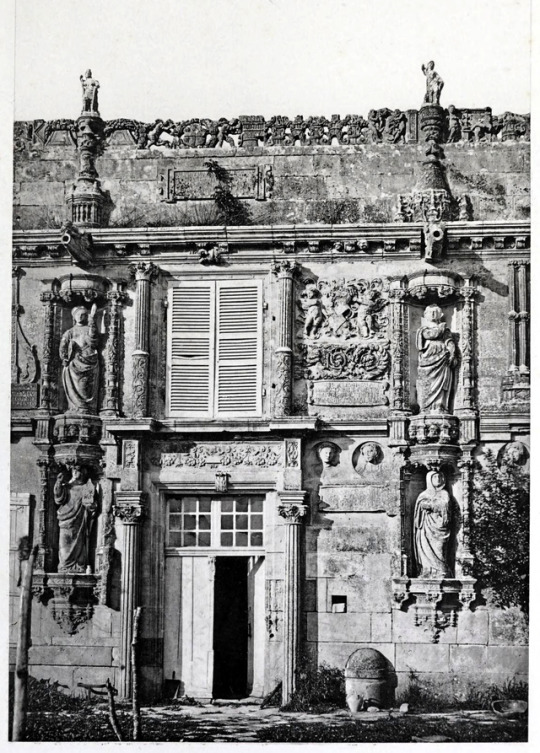
The Chateau d’Usson, France
125 notes
·
View notes
Photo

#Repost @moirataillefer • • • • • • Usson, Auvergne, France Gargoyles in Usson. Sur la route, il y a eu cette pause dans ce village d’Auvergne déserté qui accueillît l’exil de la reine Margot pendant 19 ans! #usson #gargoyles #gargoylelamps #villagedefrance #auvergnetourisme #plusbeauvillagedefrance #gargouilles #lampholder #lampedextérieur #villagedelareinemargot #Ukrainewillwin https://www.instagram.com/p/Chm2uMZI2F8/?igshid=NGJjMDIxMWI=
#repost#usson#gargoyles#gargoylelamps#villagedefrance#auvergnetourisme#plusbeauvillagedefrance#gargouilles#lampholder#lampedextérieur#villagedelareinemargot#ukrainewillwin
0 notes
Photo



Usson Cathar castle, Pyrénées
Post #99, license CC-BY-SA
2 notes
·
View notes
Text
Плата Yves Usson's Pulse Delay v. 0.9

#Delian Diver#Modular Synth#Modular Synthesis#Delian Diver Modular#Synth DIY#Yusynth#Yves Usson#Delian Diver PCBs
0 notes
Text
Himnusz #1 - Hogy Üssön (produced By Saiid) - SoundCloud
Listen to Himnusz #1 - Hogy Üssön (produced By Saiid) by A Zosztály on #SoundCloud
0 notes
Text

“Got your back against the wall
Say, where's your backbone, brother?
Where's your back bone, brother?” ~KALEO
0 notes
Photo

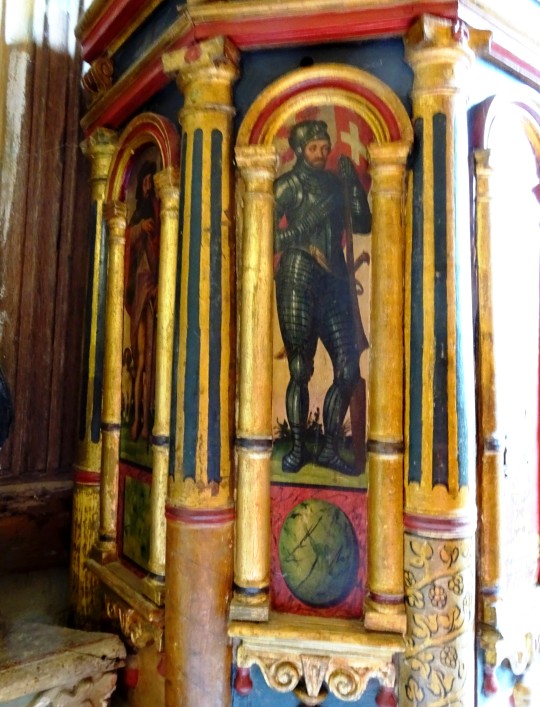
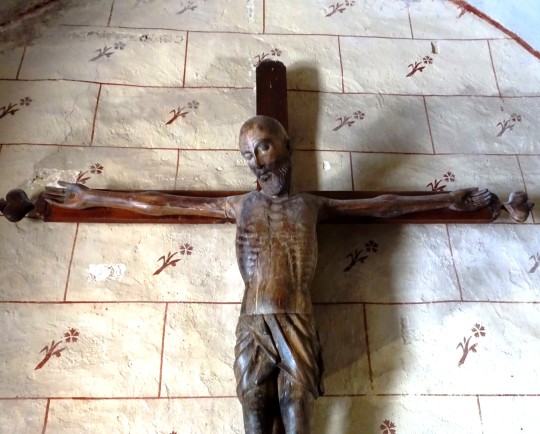
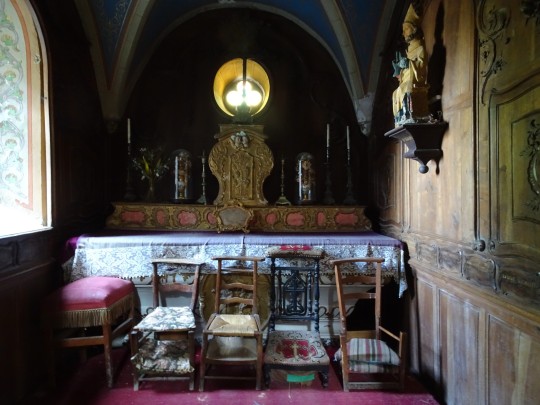

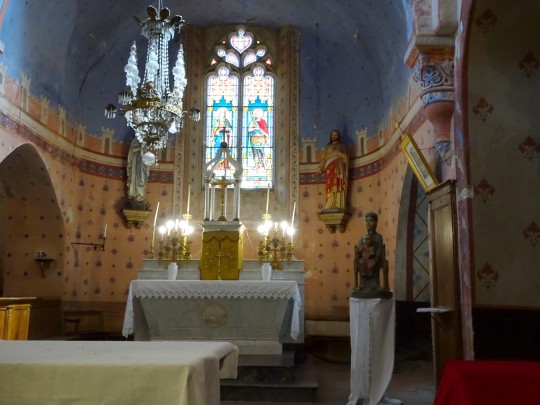

Je reviens ENCORE une fois à mon projet de présenter la plupart de mes 55800 photos (environ). On est en 2017 et comme ce blog est né en 2017, j’arriverai donc au bout de cette présentation.
Avec Christine, on avait décidé de partir de Pau vers Vichel en Auvergne par les petites routes. Nous voici enfin aux environs de Vichel.
Le charmant village médiéval d’Usson. L’église romane Saint-Maurice avec des reliquaires, d’anciens prie-Dieu...
#souvenirs#auvergne#usson#reliquaire#église#église romane#art roman#roman auvergnat#église saint-maurice#prie-dieu
9 notes
·
View notes
Photo




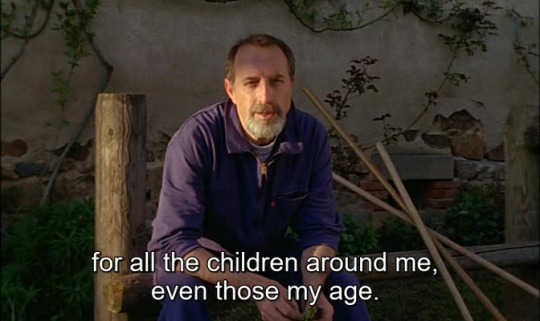


Être et avoir [To Be and To Have] (Nicolas Philibert, 2002)
#Être et avoir#Nicolas Philibert#France#Auvergne#enfants#film documentaire#amitié#simplicité#école primaire#classe#To Be and To Have#instituteur#enseignement#professeur#Saint-Étienne-sur-Usson#relations#élèves#pédagogie#vie#école maternelle#apprentissage#lecture#paysans#village#documentary film#vivre ensemble#monde rural#rural school#Massif central#Puy-de-Dôme
31 notes
·
View notes
Note
I think the fact that Marguerite lived a long and fruitful life of 62 years compared to her sisters Claude and Elizabeth living only 23 and 27 years proves that the mantra of be a slut, so whatever you want is truly the way to live your life.
shdhahdh I mean, well Elisabeth and Claude were also churning out babies in quick succession which probably doesn’t help in terms of longevity and they both died as a result of childbirth. Elisabeth died a day after giving birth and Claude while giving birth.
So like, although I don’t find Marguerite’s sisters to be half as interesting as her and I don’t think that would have changed if they’d been longer lived, I don’t think it’s particularly fair to judge them for that, you know?
We don’t really know whether Marguerite was infertile (I mean not that it matters in terms of like it doesn’t change her intrisinic value as a human person) because although she and Henri never had kids together, nor do I think we have any reports of her ever even being pregnant, while Henri had kids with various mistresses and later with Maria de’ Medici, I’m of the opinion that she and Henri probably rarely slept together. To look at another example, Henry I of England was married twice. He had two children with his first wife, Matilda of Scotland, including the indomitable Empress Matilda, as well as numerous children with other women out of wedlock. He had no children with his second wife, Adeliza of Louvain. However, after his death, Adeliza remarried and had seven children with her second husband, William d'Aubigny, 1st Earl of Arundel. The reason I think this is a good example is that both parties (Henry and Adeliza) clearly were fertile yet had no children together. It’s a good reminder that we cannot be sure what kind of fertility issues were going on in royal marriages.
We also don’t know how far her love affair with Henri de Guise before her marriage went.
In any case, I point this out because if Marguerite were never pregnant, which it appears she never was, this would have prevented her from dying in childbed like her older sisters, which would have gone a long ways towards extending her potential lifespan.
There is a report, though unsubstantiated, that while Marguerite was imprisoned in the castle of Usson, she believed she was going to die and in the farewell letter she sent to her mother, she asked that a post-mortem be performed to put an end to gossip that she was pregnant by Jean de Lard de Galard d'Aubiac, her supposed lover.
Every time she fell ill, there were rumors she was pregnant.
Of course she was long lived, even disregarding that, outliving all her family members including her ex-husband.
Two antecdotes I like about her sisters:
Elisabeth and Felipe were very loving parents to their two daughters and Elisabeth had a very warm relationship with her stepson, the very troubled Carlos, Prince of Asturias, son of Felipe by his first wife, Maria Manuela of Portugal. (Elisabeth was wife #3 of 4 :/)
Although Carlos was mentally unstable, with increasing reports of his bizarre and cruel, verging on sadistic behavior, Carlos was always kind and gentle with his stepmother. When Felipe eventually locked his eldest son away in 1568, Elisabeth is reported to have cried for days.
Claude was her mother’s favorite daughter and Catherine occasionally visited her daughter in Lorraine. Catherine was present for the baptism of Claude’s firstborn son, Henri. She liked to be surrounded by her grandchildren by Claude. Claude also frequently visited her mother in Paris and was present for many significant royal events.
Not substantiated but while Claude was in Paris for her sister Marguerite’s wedding, she had obviously been informed about the Massacre that was planned and tried to stop Marguerite from leaving their mother’s rooms. To which Catherine told her elder daughter not to tell the younger anything and said that it would be suspicious if Marguerite did not leave and that if it were “god’s will”, she would be safe from harm.
When Claude died in childbirth at age 27, her husband although also still young vowed not to marry again, being unable to find Claude’s equal.
Well the slut stuff...a lot of that is either anti-Valois or Bourbon propaganda. She and Henri de Guise wanted to get married. Her mother and bother Charles IX beat her for what was seen as impudence on her end for trying to promise her hand, which wasn’t hers to give. A royal princess wasn’t worth wasting on an already grasping and powerful noble family when she could provide a foreign alliance. Marguerite’s happiness wasn’t considered an important factor.
After Elisabeth’s death, Catherine offered Marguerite’s hand to Felipe. Marriages were also broached with Felipe’s son, Carlos, Prince of Asturias; Sebastião, King of Portugal; and Archduke Rudolf of Austria before she was betrothed to her cousin, Henri, King of Navarre.
The tale that Marguerite’s brother Charles IX forced her head down as though she were nodding her assent (which we see in the La Reine Margot) is the fabrication of François Eudes de Mézeray (born 1610 and thus would have been 5 when Marguerite died). It was Bourbon propaganda used to justify the annulment of Marguerite and Henri’s marriage 27 years later. Notably, Marguerite does not mention this incident in her Memoirs but doesn’t shy away from discussing her brother Charles’ affairs.
After her marriage, Marguerite definitely took lovers but it is hard to tell what is fact and what is invented about her affairs. Much of her alleged notoriety came from pamphlets that sought to publicly discredit Marguerite and her family.
By the letters that Marguerite sent to her lover, Jacques de Harlay, we have a conception of what Marguerite considered to be love, a union of the minds and bodies, which brought about a fusing of souls.
This makes her distinct from her mother’s Flying Squadron, Catherine’s ladies-in-waiting who she used to seduce courtiers for her own political ends. Charlotte de Sauve, for example, who became Henri de Navarre’s mistress, reputedly did so on Catherine de Medici’s orders.
Marguerite, however, though very pragmatic considering she was also a devout Catholic, never mixed politics and love.
Marguerite went through a looot. I do think she epitomizes the saying the best revenge is living well, but she had to go through a lot to get though to the other side.
No one seems to have appreciated Marguerite’s intelligence and loyalty in her own family. In her teenage years, she was particularly close to her brother Henri. When he was obliged to leave court in 1568 to see to the royal armies, he asked his sister to look out for his interests with the king and their mother. Marguerite was happy to do so, even though doing so won her no favors with her mother or Charles. Was Henri grateful for this? No. He discovered her relationship with Henri de Guise and told on her to their mother and brother.
She assisted her younger brother, François, Duke d’Alencon and her husband, Henri, King of Navarre in their conspiracy, an attempt to link together moderate Catholics and Henri’s Huguenot subjects as an alternative monarch to the heir presumptive Henri (who favored suppressing Protestant worship) when Charles IX’s health appeared to be fading in 1573.
After the conspiracy was uncovered and the conspirators executed or arrested (depending on their rank), Marguerite wrote a letter in support of her imprisoned husband.
After Charles IX’s death, Henri and François were freed by Henri III and permitted to return to court, but Marguerite’s betrayal was neither forgotten nor forgiven by the king.
Further on, Charlotte de Sauve, who had become Henri’s mistress, encited a duel between Henri and François, both of whom were her lovers. This led to a falling out between the two and made things even harder for Marguerite.
Both her husband and brother managed to escape court. But while François refused to negotiate until his sister was set free, Henri did not even do his wife the courtesy of warning her about his departure, leaving her to be confined within the Louvre under suspicion of having helped her husband to escape.
After Marguerite’s death, Maria de’ Medici paid off her debts.
So while I agree that be a slut, do whatever you want is truly the way to live your life, I’m not sure Marguerite would have agreed to that exact wording, you know?
#literally thank you so much for an opportunity to talk about marguerite#marguerite de valois#asks#answers#anonymous
3 notes
·
View notes
Text

Fun walk today at Usson du Poitou. They’ve taken a large low-lying swampy area along a creek and created a great nature walk among the creeks and pools. All on this elevated walkway. And thanks to my nerdy Cornell bird call identification ap (as recommended by Marty! Thank you so much!), we could identify a dozen birds we’ve never heard of?
1 note
·
View note
Text
a het tanulsagai:
- a felbehagyott terapia csak fel siker
- negy honapig tudok barmit elhitetni magammal ugy, hogy az ne usson vissza, aztan utana elszabadul es rombol
- kutya nelkul rendkivul unalmas es haszontalan az elet
- nincs senki, akitol tanacsot kerjek
7 notes
·
View notes
Photo


→ Margaret of Valois was the queen of two kingdoms, one being Navarre and the second being France. Born as Marguerite de Valois on May 14, 1553, she was the seventh child and third daughter of King Henry II of France and his wife, Catherine de’ Medici. At the age of 19, she was married to her distant cousin Henri; the wedding was solemnized at the Notre Dame Cathedral in Paris. Six days after the ceremony, on St. Bartholomew’s Day, Roman Catholic factions instigated mob violence against the Huguenots. Infamous as the Bartholomew’s Day Massacre, thousands of Huguenots and many prominent Protestant leaders, including Admiral Gaspard de Coligny, were assassinated on that day. Margaret played a crucial role during the assassinations. She saved the lives of many prominent Protestants by sheltering them in her room and prohibiting the assassins from entering. In 1586, she was incarcerated as a state prisoner by her brother Henri III. After the death of her brother, she became a prisoner of exile under the rule of her husband Henri IV. She was kept in captivity in the castle of Usson in Auvergne for 18 years. Margaret utilized this time to write her thoughts in the form of poems and memoirs. Her memoirs were short stories that described her strained relationship with her husband as well as her disputes with her brothers, and they were published posthumously in 1628. By 1589, all her brothers had died, leaving behind no sons. In the absence of an heir, Henri IV was crowned King of France, making Margaret the queen consort of France. Their marriage was annulled in 1599, but she was granted permission to retain her title as queen. During her last years, she spent some time at the Hostel de la Reyne Marguerite on the banks of the river Seine before reconciling with her husband and going back to Paris. She devoted her final years to helping the poor and started teaching the arts while simultaneously nurturing the king’s children. She passed away on March 27, 1615, and she was buried in the funerary chapel of the Valois family in the Basilica of St. Denis.
135 notes
·
View notes